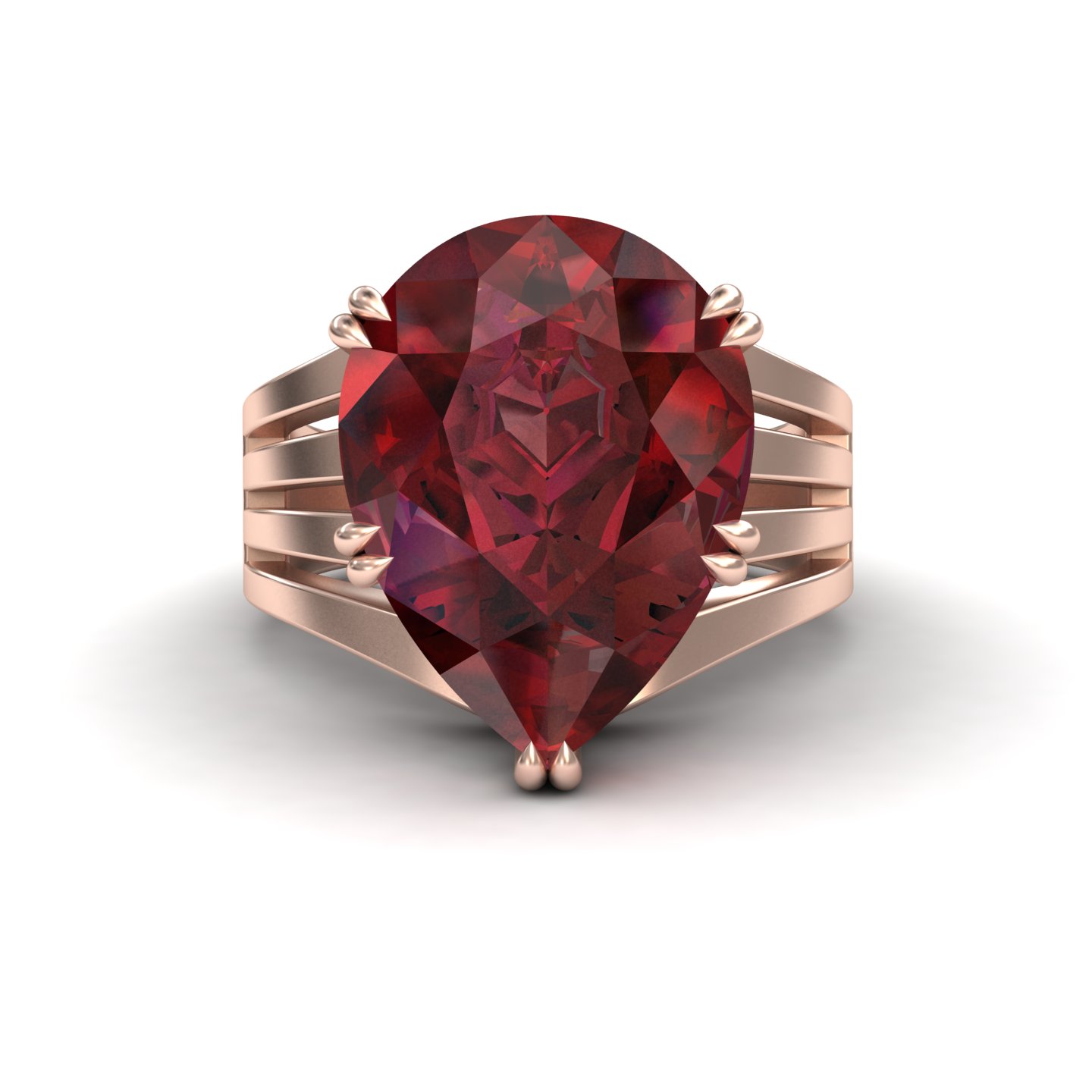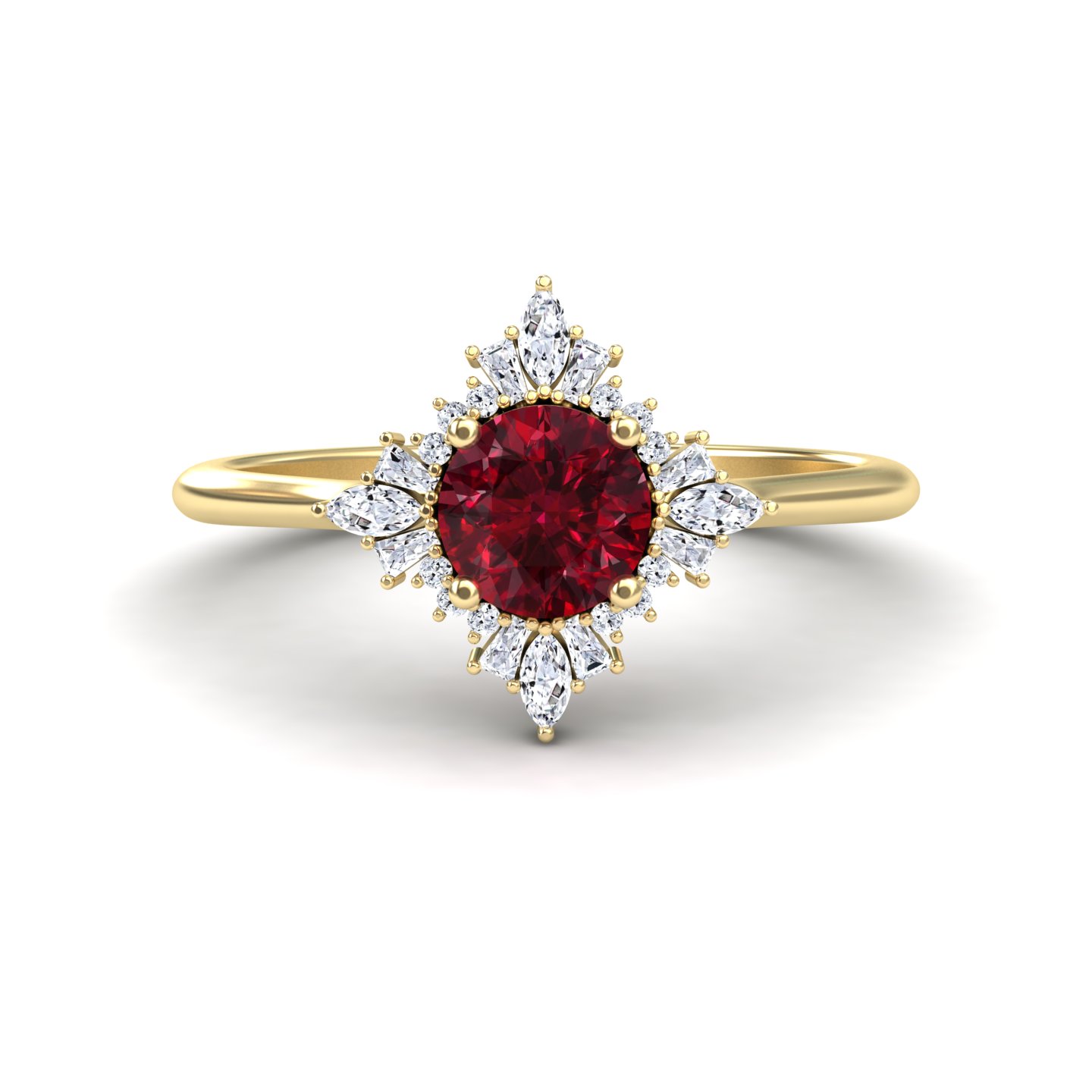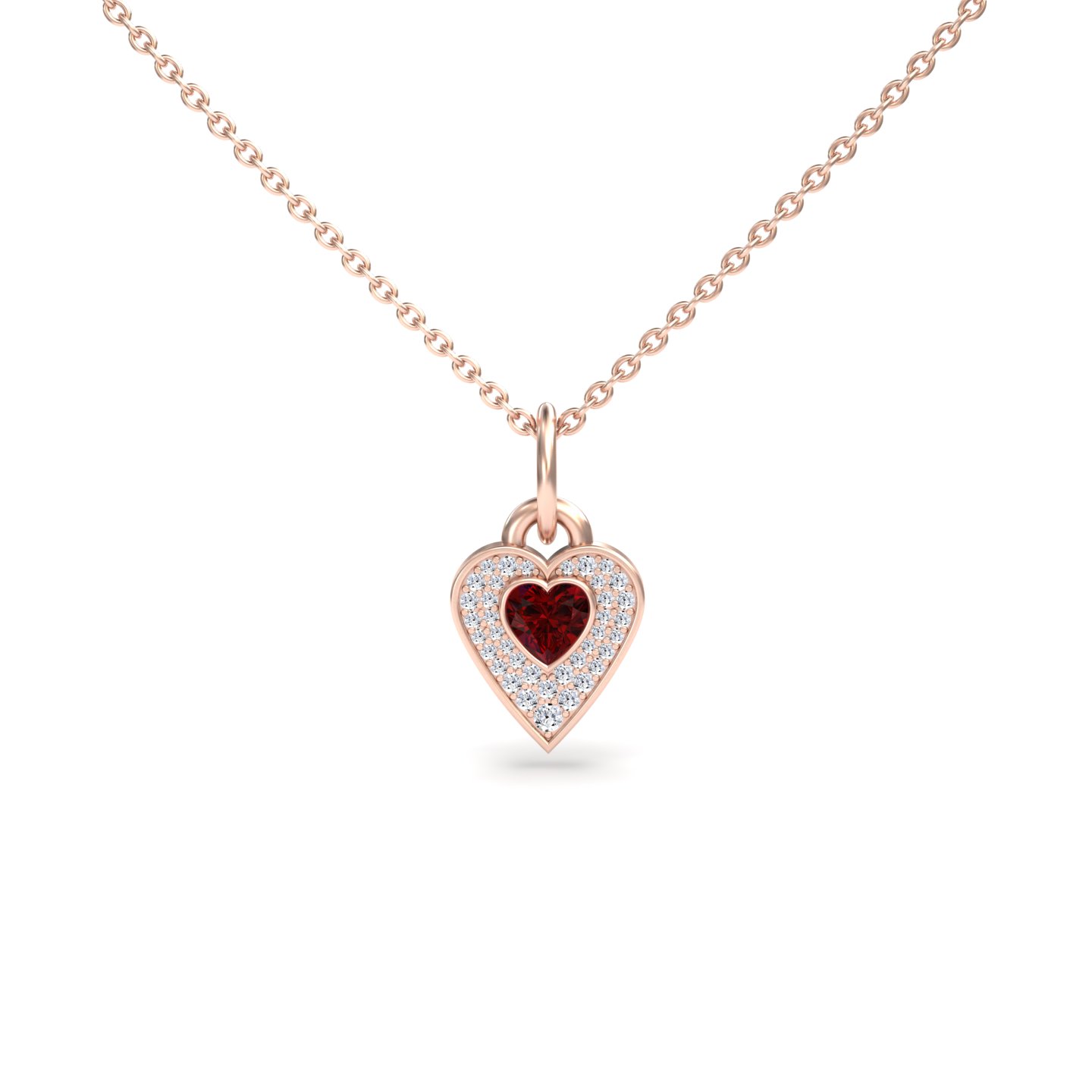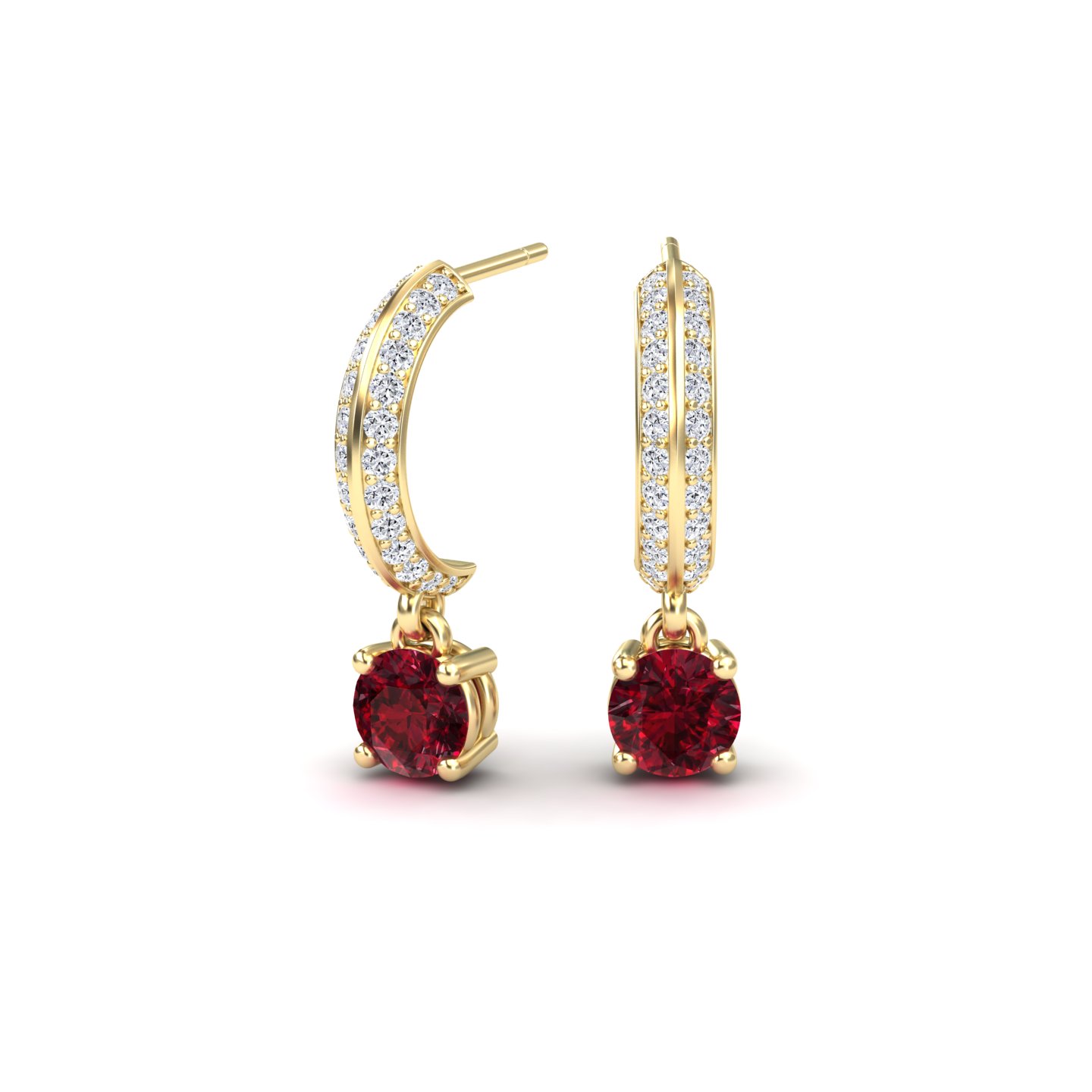Everything You Need to Know About Ruby Engagement Rings
The word "ruby" comes from the Latin ruber, meaning red—and there's something undeniably captivating about a deep crimson gemstone on your finger. More couples are choosing rubies over traditional diamonds, and honestly? We get it. There's passion in that red. History, too. And let's not forget that rubies are tough enough to last forever, ranking just below diamonds in hardness.
TABLE OF CONTENTS
- Where Rubies Come From & Their History
- What Ruby Engagement Rings Really Mean
- Picking the Right Ruby Ring
- Ruby Shapes & Cuts That Stand Out
- Setting Styles Worth Considering
- Different Types of Natural Rubies
- Which Metal Works Best?
- Taking Care of Your Ruby Ring
- Our Favorite Ruby Rings
- Your Questions Answered
Where Rubies Come From & Their History
Rubies show up in places you'd expect adventure stories to be set—Myanmar (formerly Burma), Afghanistan, Madagascar, Mozambique. There are even some deposits in parts of the U.S., though they're not as famous. What makes these stones special isn't just where they're from, but how rare they actually are.
Diamonds used to dominate engagement rings completely, but back in the 1600s and 1700s, wealthy Europeans started mixing things up. They'd pair rubies with diamonds to represent eternal love, and the contrast between red and white stones became a status thing. If you had money, you had rubies.
Hindu tradition took rubies seriously—like, really seriously. They divided them into castes based on quality and color. An "upper class" ruby wasn't supposed to even touch a "lower class" one because they believed it would somehow contaminate the better stone. That level of reverence says something about how people have valued these gems across cultures for centuries.
Fast forward to today, and celebrities have brought ruby rings back into the spotlight. Katy Perry, Jessica Simpson, Eva Longoria—they've all rocked ruby engagement rings, which has definitely influenced what everyday couples are considering. Sometimes it just takes the right person wearing something to make everyone else realize how stunning it is.
What Ruby Engagement Rings Really Mean
That deep red color? It's not subtle. Rubies have always been tied to passion, desire, and intense romantic love. When you're making a lifetime commitment, that symbolism hits different than a clear diamond.
There's this old legend that rubies aren't actually stones—they're hardened fire. Supposedly, they have this power to literally ignite hearts. Whether you believe in that mystical stuff or not, there's something poetic about the idea. Some traditions even say rubies can settle arguments between lovers, which honestly sounds useful.
Beyond romance, rubies represent courage and strength. Warriors used to wear them believing they offered protection. So you've got this combination of passion, bravery, and safeguarding all wrapped up in one stone. For couples starting their lives together, that's pretty meaningful.
Rubies are July's birthstone and the traditional gift for 15th and 40th anniversaries. If either of those applies to you, a ruby engagement ring adds another layer of personal significance.
Picking the Right Ruby Ring
Understanding What Actually Matters
Just like diamonds, rubies get evaluated on the "Four Cs"—but the priorities are a bit different. Here's what you should actually care about:
Color is Everything: This is where most of a ruby's value comes from. The finest rubies have this intense, vivid red called "pigeon's blood red"—which is a weird name, but it's the gold standard. That said, rubies range from pinkish-red to deep crimson, and the "best" one is whatever shade speaks to you. Just know that in the U.S., if it's too light and pink, it's technically classified as a pink sapphire, not a ruby.
Clarity Matters, But Differently: Rubies naturally have inclusions—little imperfections inside the stone. The most valuable ones are transparent with minimal visible flaws, but here's the thing: some inclusions actually create cool effects, like star rubies. Look for stones where the inclusions don't mess with the brilliance or make the stone weak.
Cut Makes or Breaks It: You can have the most beautiful ruby in the world, but if it's cut poorly, it'll look dull. A good cut maximizes the color and sparkle. It should be symmetrical and proportional—that's what lets light bounce around inside the stone the way it's supposed to.
Carat Weight = Exponential Pricing: Unlike some gems where size doesn't change the price that much, with rubies, bigger means exponentially more expensive. A large, high-quality ruby can actually cost more than a diamond of the same size. Most engagement ring rubies are between 0.5 and 2 carats, with prices anywhere from $2,500 to $10,000 per carat depending on quality.
Ruby vs. Diamond: The Real Comparison
Here's something that surprises people: top-quality rubies are actually rarer than diamonds. That's right. A truly exceptional natural ruby is harder to find than a diamond. Price-wise, though, you might save money by mixing rubies with diamonds in your design—diamonds are usually less expensive per carat than high-quality rubies. If you're curious about other gemstone jewelry options, there's a whole world beyond traditional choices.
Durability? Rubies score a 9 on the Mohs hardness scale. Diamonds are a 10. That tiny difference means rubies are still tough enough for everyday wear—way more durable than emeralds, morganite, or aquamarine. Plus, rubies don't have "cleavage," which is the tendency to break along certain lines. They're surprisingly resistant to chipping and cracking.
Ruby Shapes & Cuts That Stand Out
The shape you choose changes the whole vibe of the ring. Here's what works:
Round Cut
The classic. Round cuts maximize brilliance and give you the most sparkle for your money. They're versatile—you can pair them with any setting style, from super simple solitaires to elaborate vintage designs with lots of metalwork. Round plays well with other shapes too, which is useful if you're thinking about accent stones.
Oval
Ovals have this elegant, elongated look that makes your finger appear longer and the stone look bigger than it actually is. It's a win-win. You get that timeless sophistication that works in both vintage-inspired and modern designs. Ovals mix well with round accent stones or other oval shapes.
Cushion Cut
If you're into vintage or Art Deco styles, cushion cuts are where it's at. They've got rounded corners and big facets that really show off the ruby's color. Pair a cushion-cut ruby with a diamond halo and some intricate metalwork, and you've got something that looks like it came from another era—in the best way possible.
Emerald & Asscher
These step-cuts have long, rectangular facets that create this "hall of mirrors" effect. They're less about sparkle and more about showcasing the stone's clarity and color. If you've got a high-quality ruby with great color saturation, these cuts let it shine (literally). They give off serious architectural, modern vibes.
Pear & Marquise
Both of these elongated shapes are dramatic and eye-catching. Pears (teardrops) have this romantic symbolism, while marquise cuts give you regal elegance with those pointed ends. Either way, they make fingers look longer and more slender, which is a nice bonus.
Setting Styles Worth Considering
Solitaire
Sometimes simple is best. A solitaire setting puts all the attention on the ruby itself—no competition, no distractions. Just a clean band and that gorgeous red stone. It's timeless, and you can easily pair it with different wedding bands later without worrying about them clashing.
Halo
Surround your ruby with tiny diamonds (or smaller rubies), and suddenly your center stone looks bigger and more sparkly. Halos add protection for the main stone too, which isn't a bad thing. This setting works with basically any ruby shape and gives you that extra bit of dazzle.
Three-Stone
Past, present, future—that's the symbolism here. You've got your center ruby flanked by two smaller stones (diamonds are popular for contrast). It's meaningful and creates this nice visual balance. Plus, you can get creative with the side stones' shapes and sizes. Three-stone settings work with other gemstones too—check out sapphire ring designs for inspiration on mixing colored stones.
Pavé
Tiny diamonds or gemstones set close together along the band create this continuous sparkle that complements your center ruby without stealing the show. Pavé works in pretty much any style, from super traditional to cutting-edge modern. Just be aware that those tiny stones need occasional maintenance to make sure none come loose.
Bezel
A metal rim wraps around the edge of your ruby, holding it securely while giving you a sleek, contemporary look. If you're active or work with your hands a lot, bezel settings offer maximum protection. They also have this interesting effect of making the center stone appear larger than it is.
Vintage & Art Deco
Filigree, milgrain, geometric patterns—vintage-inspired settings have all these intricate details that pair beautifully with rubies. There's something about the combination of old-world craftsmanship and that deep red color that just works. These styles have serious romantic appeal.
Different Types of Natural Rubies
Where a ruby comes from affects its color, quality, and price. Here are the sources that jewelers actually care about:
| Ruby Type | Color Characteristics | Origin |
|---|---|---|
| Burmese Ruby | Deep, vivid red with slight blue undertone (the famous "pigeon's blood" color) | Myanmar (Burma) |
| Mozambique Ruby | Purplish to dark red with excellent clarity | Mozambique, Kenya |
| Thai Ruby | Darker red with brownish tones | Thailand (Bangkok) |
| Madagascar Ruby | Red to orange-red with good saturation | Madagascar |
| Afghan Ruby | Light to dark red with varying intensity | Afghanistan |
Lab-Grown Rubies: Worth Considering
Lab-grown rubies are the same thing as natural rubies—same chemical makeup, same physical properties, same hardness. The only difference is that one forms in a lab over weeks instead of in the earth over millions of years. You can't tell them apart without specialized equipment.
Why go lab-grown? They're cheaper (usually 30-50% less), ethically sourced without any mining concerns, better for the environment, and often have better clarity since the growth process is controlled. If you care about those things—and many people do—lab-grown is a smart choice that doesn't compromise on beauty or durability.
Which Metal Works Best?
Yellow Gold
The classic choice, and for good reason. Yellow gold's warm tone complements that rich ruby red perfectly. It also makes any diamonds in the design pop. Available in 14K and 18K (higher karat = more pure gold = more expensive). If you're going traditional, this is it.
Rose Gold
Rose gold and rubies together create this romantic, slightly vintage vibe that's really popular right now. The pinkish metal (it gets its color from copper mixed with the gold) harmonizes beautifully with red stones. It's also a bit more affordable than pure yellow gold, and it's having a major moment style-wise.
White Gold
If you want modern and sleek, white gold creates dramatic contrast that makes rubies really stand out. It's especially good for designs with more diamonds than rubies. White gold is made by mixing pure gold with white metals like palladium, then plating it with rhodium for extra shine. Over time, that plating wears off and needs to be redone, but it's not a big deal.
Platinum
The premium option. Platinum is naturally white (no plating needed), incredibly durable, and won't fade or tarnish. It's denser than gold, which makes it perfect for securing precious stones. The downside? It's expensive. But if you want the absolute best quality and longevity, platinum delivers.
Blackened Gold
For something different, blackened (oxidized) gold creates this edgy, gothic-romantic aesthetic. It makes rubies look like they're glowing from within. It's not for everyone, but if you're after something unique, this is a standout option that still gives you the quality of solid gold.
Taking Care of Your Ruby Ring
Rubies are tough, but a little care goes a long way toward keeping your ring looking new.
Daily Habits
Take your ring off when you're dealing with harsh chemicals, doing heavy physical work, or exposing it to extreme temperatures. Rubies can handle a lot, but the metal setting and any accent diamonds deserve protection. Keep it separate from other jewelry so it doesn't get scratched.
Cleaning at Home
Warm water, a drop of mild dish soap, and a soft toothbrush—that's all you need. Gently scrub around the stone and in the setting where dirt builds up, rinse thoroughly, and dry with a soft cloth. Skip the ultrasonic cleaner if your ruby has visible inclusions or if you're not sure whether it's been treated.
Professional Check-Ups
Take your ring to a jeweler once a year for a professional cleaning and inspection. They'll check that the prongs are secure, look for any potential issues with the stone or setting, and catch problems before they become expensive repairs. Think of it like a dental cleaning—preventive maintenance.
Insurance & Paperwork
Insure your ring. Seriously. Keep all your documentation—certificates, appraisals, receipts. Update your appraisal every few years because ruby values can increase over time. It's boring paperwork stuff, but you'll be glad you did it if anything ever happens.
Our Favorite Ruby Rings
We're all about ethically sourced ruby jewelry with complete transparency—no hidden costs, no sketchy supply chains. Just beautiful stones and honest pricing.

Lab Grown Ruby & Diamond Regal Ring - Anna
This pear-shaped lab-grown ruby paired with white diamonds makes a statement without trying too hard. Available in 14K white, rose, yellow, or blackened gold. Total weight: 11.27 ct with 0.24 ct of accent diamonds.
View Details →
Ruby & Diamond Vintage-Inspired Starburst Ring - Delia
Vintage Art Deco vibes with a 0.49 ct center ruby surrounded by a starburst halo of 0.60 ct diamonds. This one's got serious character and works whether you're into retro styles or just appreciate good design.
View Details →
Lab Grown Ruby & White Diamond Heart Necklace - Tara
Not a ring, but this heart necklace (0.60 ct lab-grown ruby, 0.229 ct diamonds) pairs perfectly with a ruby engagement ring. Sometimes you want to coordinate your jewelry without being too matchy-matchy.
View Details →
Ruby & Diamond Pavé Drop Hoop Earrings - Serena
Emerald-cut rubies (0.50 ct) with pavé-set diamonds (0.40 ct) in drop hoops. These complete a bridal jewelry set without feeling like you bought everything from the same catalog. Available in all our metal options.
View Details →